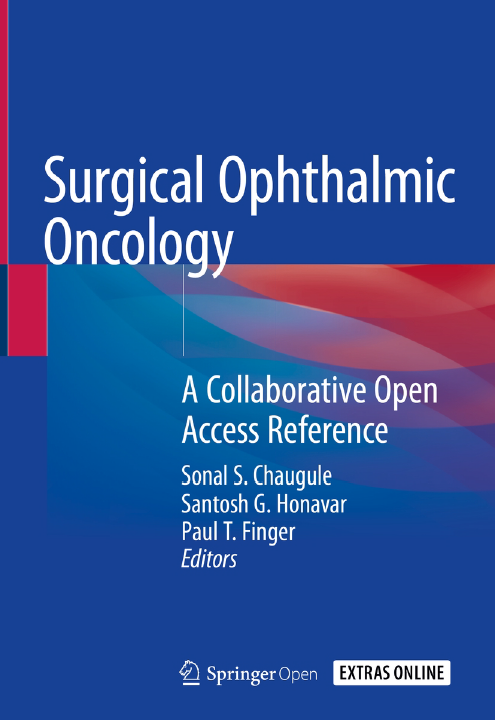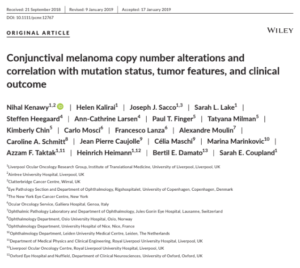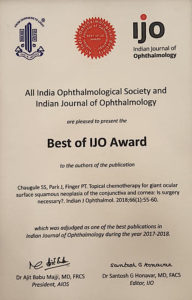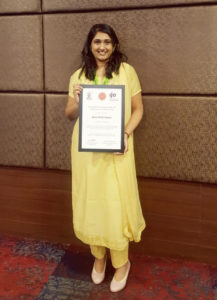Associate Specialist Opening at the NYECC
Join Dr. Finger and his team at the New York Eye Cancer Center (NYECC)! Currently, there is an opening for a fellowship trained associate specialist to join Dr. Finger in the practice of Ocular Tumor, Orbital Disease, and Ophthalmic Radiation Therapy.
The ideal candidate should be able to treat patients with ocular tumors of the eye, lids and orbit. They must have completed at least 1-year subspecialty training in ophthalmic oncology. Candidates with additional retinal or ocular plastic surgery will be preferred. The candidate must be licensed to practice in the United States of America, American Board of Ophthalmology certified and be willing to start on or before July 1st, 2020.
Working alongside Dr. Finger rewards one with effective mentorship and fresh perspectives on complex eye cancer cases. The NYECC is a world-class facility for the diagnosis and treatment of eye cancer. Founded in 1995, Dr. Finger has treated many thousands of patients. Dr. Finger and his staff at NYECC work closely with patients and referring doctors to provide advanced treatment in a responsive, caring environment.
Dr. Finger will be meeting candidates at the upcoming, 2019 American Academy of Ophthalmology Annual Meeting in San Francisco. To arrange an interview, send a cover letter, CV and two letters of recommendation to pfinger@eyecancer.com.
ABOUT DR. FINGER:
Dr. Finger is certified by the American Board of Ophthalmology and is a Fellow of both the American College of Surgeons and the American Academy of Ophthalmology. He is fellowship trained in ocular tumor, orbital disease, and ophthalmic radiation therapy. He is considered a world leader and specialist in radiation treatment of the eye.
He has researched and developed new methods of diagnosis used around the world. These include new applications of high-frequency anterior segment ultrasound (“ultrasonic biomicroscopy,” or UBM), OCT (Optical Coherence Tomography), digital imaging. He believes in small incision surgery and therefore invented the “Finger Iridectomy Technique” biopsy for iris and ciliary body tumors and FACT micro incision orbitotomy technique for orbital tumors.
In terms of treatment, Dr. Finger is widely known to invent palladium-103 plaque radiation therapy for choroidal melanoma which has resulted in improved outcomes compared to other plaques and proton beam (See Dr. Fingers’ Results Page). He is also known for discovering anti-VEGF therapy for radiation retinopathy and radiation optic neuropathy.
At The New York Eye Cancer Center, we want patients to understand their diagnosis, alternatives of treatment and to see their current status. This is why Dr. Finger placed 4K 55″ inch HD displays in each examination room. Using photographs, OCTs, ultrasounds and angiograms, Dr. Finger and his staff can teach patients everything they need to know about their eye tumor.
Dr. Finger is looking for a motivated, compassionate and dedicated physician to join his practice. If you are striving for excellence, join us!
Practice Locations:
The New York Eye Cancer Center
115 East 61st Street – Suite 5B
New York, NY 10065
+1 212-832-8170
Teaching Locations:




 With access to a large sample of nearly 100 patients from eight different eye cancer centers around the world, the researchers behind this study sought to clearly define key
With access to a large sample of nearly 100 patients from eight different eye cancer centers around the world, the researchers behind this study sought to clearly define key  Click here for the full-text!
Click here for the full-text! In January of 2018, ECF fellow Dr. Sonal Chaugule, alongside Dr. Paul Finger and Dr. J. Park, published the study
In January of 2018, ECF fellow Dr. Sonal Chaugule, alongside Dr. Paul Finger and Dr. J. Park, published the study  evidence of vision-limiting complications, no tumor recurrences, and no patients required additional treatment for their giant OSSN. For all patients in the study, their cancer was cured, proving to researchers that topical chemotherapy drops were not only safe, but also effective as treatment for “giant” OSSN.
evidence of vision-limiting complications, no tumor recurrences, and no patients required additional treatment for their giant OSSN. For all patients in the study, their cancer was cured, proving to researchers that topical chemotherapy drops were not only safe, but also effective as treatment for “giant” OSSN.








